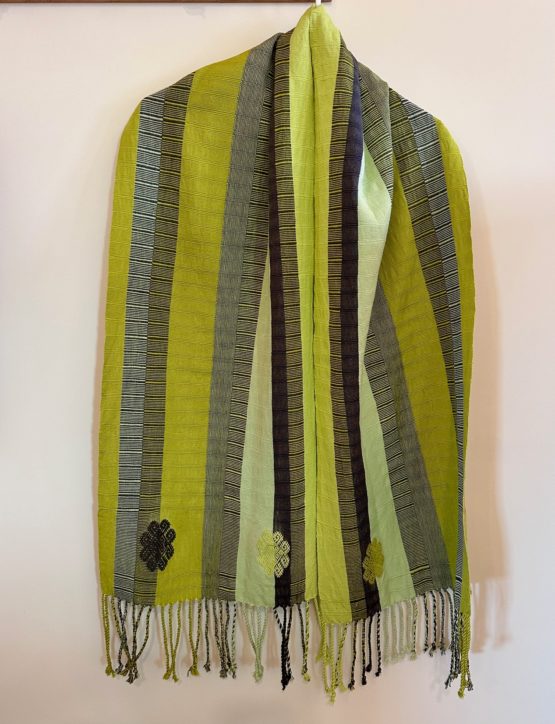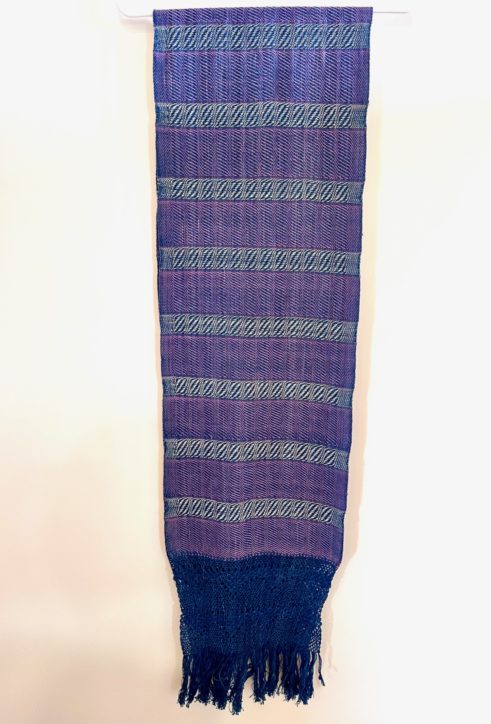Looking for a spectacular brunch spot in Oaxaca with gourmet taste at a moderate price? Look no further. Criollo restaurant offers it all! Note: Be sure to make a reservation! Doors open at 10 a.m.
There is a reason that this Top Chef Enrique Olvera (of Pujol fame) dining spot is packed with locals and a few foreign visitors on Sunday morning! The outdoor dining alfresco under the shade trees and palapas is a real treat. It’s casual. It’s beautiful. It’s delicious. Okay. Now I’m repeating myself.


Set in proximity to a cocina de humo — an outdoor smoke and grill kitchen — the picnic tables are adorned with huge vases of fresh flowers on a patio of crushed gravel. Waiters offer a choice of barrista made coffees or café de olla— the sweet, cinnamon and vanilla infused coffee that native Oaxacans love to dunk their breakfast bread into.

Now for the bread! The choices are conchas—bigger and more delicious than you find anywhere, sweet bread stuffed with vanilla cream, and a nutty fruit bread flavored with ashes—my particular favorite. One little bite was not enough to satisfy. I had to eat the whole thing. Estoy gordita.

Dean, Kay and I shared a plate of grilled meats. It comes with grilled veggies and pineapple, guacamole, beef, pork ribs and chorizo. It isn’t on the menu — so be sure to ask for this. We also had a fresh fruit platter. They added granola and yogurt to the meal.

As founders of Oaxaca Eats, they know the best eating and grazing joints in town. I trust their taste explicitly. We’ve known each other since North Carolina days, before they moved to Oaxaca over six years ago.
After breakfast, Kay says, wanna go to the symphony? Sure, I say. So we hop in a taxi and get to Teatro Macedonio Alcalá JIT.
Seems the symphony is auditioning for a new conductor. Today was a special treat. Maestro William Harvey was on the podium and not only dazzled us with Bach and Beethoven, showing off his own violin virtuoso, but performed his own composition paying homage to indigenous peoples and featuring a vocalist from the Spokane tribe of Washington state, of whom only 25 native speakers remain.
It was an amazing day, a cultural treat all the way around.








































































Arte Walk Oaxaca: Graphic Arts + Painting Studios
Thursday nights are Arte Walk Oaxaca. There’s a nice little black and white map that pinpoints the independent art spaces and workshops. My favorites (plus one not listed on the map) are clustered in the neighborhood just a few blocks from the Zocalo, bounded by Hidalgo, Doblado, Xicotencatl and Colon. It’s becoming Oaxaca’s SOHO (south of Hidalgo) arts district.
David, Carol and Gabo in the textured courtyard wall glow
While you can find the artists, a coterie of Oaxaca local art lovers spilling out onto the sidewalk outside postage stamp galleries, along with shots of mezcal, beers and bowls of spicy peanuts, Thursdays aren’t the only time to enjoy what Oaxaca is known for: GREAT GRAPHIC ART.
Black and white print at La Chicharra Taller de Grafica
Most galleries are open Monday through Sunday, though often it’s catch as catch can. As is the case with many small, locally owned and/or operated shops here. Many of the galleries are cooperatives, so they are staffed by rotating volunteer artists who need a venue to show and sell their work directly. THERE IS A LOT OF TALENT HERE.
A subtle wall mural of overlapping faces, faces in the crowd? Gabo Mendoza studio.
Last night, Friday, Gabriel Gabo Mendoza (tel: 951-142-7508) held an open studio where he lives and works at Xicotencatl #303. He isn’t on the map. Carol, David and I meandered in around 7 p.m. just as night was falling and the promise of a new moon hung in the sky.
Gabo’s courtyard was lit with purple twinkle lights. There were new murals on the wall. The large space will become a studio workshop for many. A table-top display held recycled Ixtlan wood mezcal boxes hand-painted with agave varieties of 750 liter bottles contained within. The mezcal is sourced locally by some of the best mezcaleros in Oaxaca and private labeled. Organic and artisanal. A great gift!
Agave painted mezcal boxes, containing artisanal juice — for sale at Gabo Mendoza
We looked through Gabo’s newest work. Talked about how artists develop and evolve over time, and how this reflects in their work along with life experiences, tragedies and joy. It was interesting to talk about the transitions from then to now, sharing life stories, sipping Agua de Jamaica (hibiscus water) and feeling the glow of the space.
Moon coming up over purple twinkle lights at festive art opening
Then, we moved on to Taller de Grafica La Chicharra at Xicotencatl #317. This is a cooperative workshop studio where you can also take classes. Tonight, Saturday, March 19, there is a new show opening and they were readying for it. Spectacular work here, too, by MK Kabrito (Alan Altamirano) plus many others, much of it affordable! Check out the T-Shirts.
Great graphic T-shirts at La Chicarra graphic workshop
After a stop into Proyecto 30-30, Hidalgo #1208, where a graphic arts show of humorous political images hang. By now, it was close to 8 p.m. and I knew Cooperativa Grafica Oaxaca at Manuel Doblado #210 closed at 7 p.m. I had stopped in there earlier in the afternoon to get some great prints on fabric buttons that I will give as gifts. Agave, calavera skulls and animal images make great hat adornment.
Wall murals highlight artist work space at Gabo Mendoza studios
We decided it was time to get a bite to eat, so walked a few blocks north on Xicotencatl that changes name to Pino Suarez when it crosses Independencia. El Sol y La Luna Restaurante Bar, Pino Suarez #304 was our destination. Open 7 p.m. t0 midnight. Artisanal beer on tap, mezcal and sueros are featured beverages. I watched as thin crusted pizzas a la the best of Italy came out of the kitchen. We ordered cheese stuffed calzones — each crusty deliciousness. Next time, maybe a hamburger. They looked good, too.
Some tools of the artist craft
Evenings this time of year are delightful. A wind comes up. Chills the hot air. Takes the edge off the beginning of the hot, spring rainy season (the rains haven’t come yet, though). Everything is in bloom. Purple Jacaranda line the avenues. A perfect time for an evening stroll to enjoy this city’s art scene and support the young artists who have so much to say through their work.
Contact: walkoaxaca@gmail.com or Facebook: artewalkoaxaca
At La Chicharra graphic arts studio and gallery
Like this:
7 Comments
Posted in Cultural Commentary, Oaxaca Mexico art and culture, Travel & Tourism
Tagged art, art walk, cooperatives, design, eat, El Sol y La Luna, food, Gabo, Gabriel Mendoza, galleries, graphic arts, La Chicharra graphic arts, Mexico, MK Kabrito, murals, Oaxaca, painting, printmaking, Proyecto 3030, restaurant, studio, t-shirts, taller, workshop